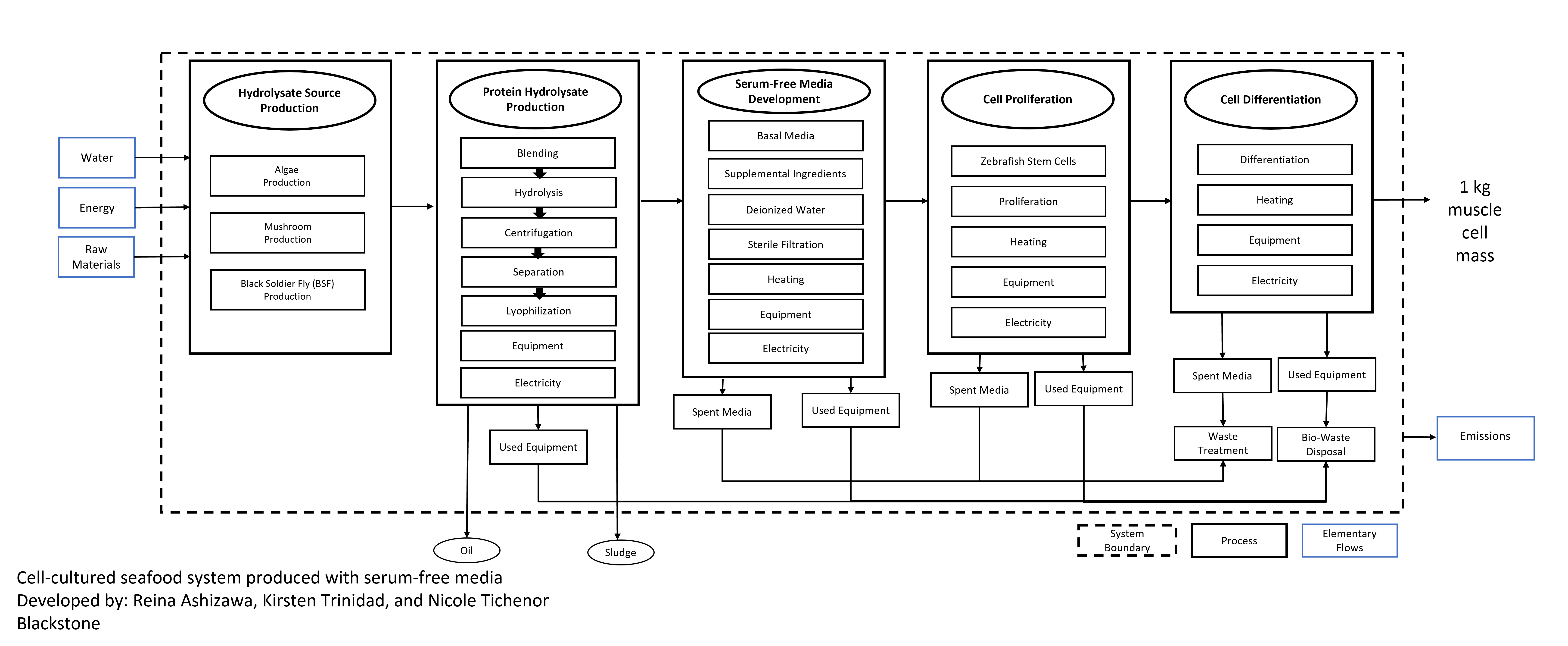
The overarching goal of Aim 2 is to evaluate the environmental performance of novel cellular meat systems at lab-scale and to assess how scaled-up versions of these systems compare in performance to relevant meat and seafood products using environmental life cycle assessment (LCA). To parameterize the LCA models, primary data collection from project labs, desktop research, literature review, and expert interviews will be used.
Task 1: Benchmark the life cycle environmental impacts of novel cellular meat systems from cradle-to-gate at the lab scale.
In Year 1 of the project, we developed and initiated primary data collection systems for the project labs, developed product system templates for the LCAs, and defined the goal and scope for lab-scale LCAs in the first two years of the project. Early on, we identified a major process data gap in the inputs used for serum-free media: recombinant growth factor. Growth factors have previously been omitted or represented with highly uncertain or proprietary data in cellular agriculture, despite recent evidence suggesting they are an environmental hotspot in these systems. Therefore, our first LCA focuses on a novel recombinant growth factor production process for cellular agriculture applications. Working in collaboration with Dr. Cameron Semper at the University of Calgary, we collected primary data and completed a life cycle inventory for this system.
Task 2: Compare environmental performance of scaled-up cellular meat systems with relevant meat and seafood products.
In Year 1 of the project, we completed an interdisciplinary review of methods for simulating commercial scale cellular agriculture systems to inform our methods. We began modeling a commercial scale system for recombinant growth factor production. We plan to publish the growth factor LCA (lab and commercial scale) this coming year and will make our processes and inventories publicly-available. For the comparative LCAs, we completed a review of available life cycle inventory databases for comparison systems and found that high quality data is available for chicken, pork, and beef. Seafood systems are less available in databases and will likely need to be built from literature values. Finally, we defined the goal and scope for a commercial scale comparative LCA in Year 2.
